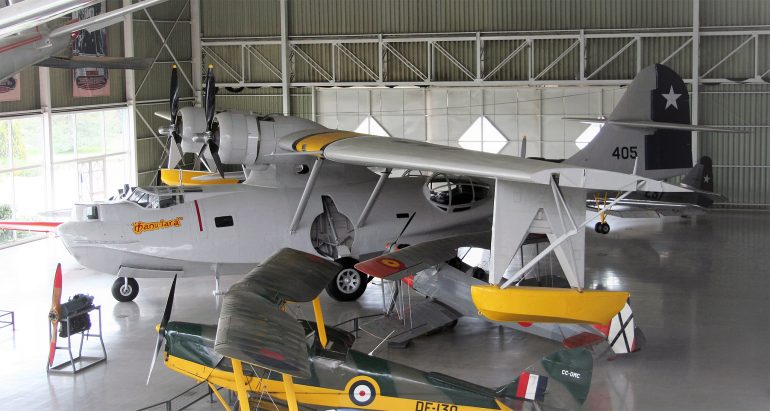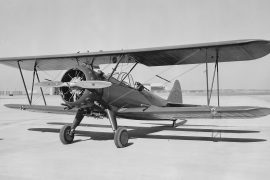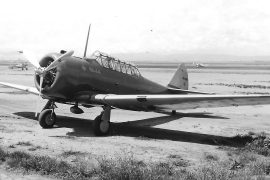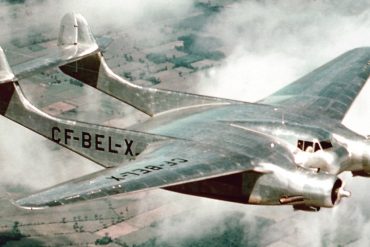A Canadian Vickers-built Catalina that was used as spares source by the Chilean company ASPAR and later obtained by the Museo Nacional Aeronáutico y del Espacio de Chile, has been restored to represent the ‘Manu-tara’, the first aircraft that linked South America and the Easter Island in 1951. But the restored Cat has also an interesting history, as she was rescued from oblivion very recently.
The restored aircraft was built with the c/n CV-520, and was delivered to the USAAF as 44-34009 and designation OA-10A-VI, on December 12, 1944. On March 3 1945 it was transferred to 7th Air Force in Hawaii, being sent to storage after the War on August 18, 1946; finally, on December 4, 1947 it was transferred to the War Assets Administration awaiting disposal.
In its civilian guise, it was flown by various US operators under the registration NC62043 (N62043 from 1949 onward): Happy Hockett of Honolulu and Thorn Engineering Corp. of Las Vegas. It was later imported in Canada by Lund Aviation of Dorval, and then sold to Leasair Ltd. of Montreal; this company registered the Catalina as CF-IHC on July 29, 1955. From that date it spent almost a decade with various Canadian companies (Leasair, Wheeler Airlines, Hans Lundberg Ltd., Timmins Aviation Ltd, Canadian Marconi Co., the Canadian Broadcasting Corporation – for a day, leased to film the solar eclipse on July 20 1963, and Leasair again) until 1966, when it was bought by French interests in order to operate it in the Pacific Ocean.
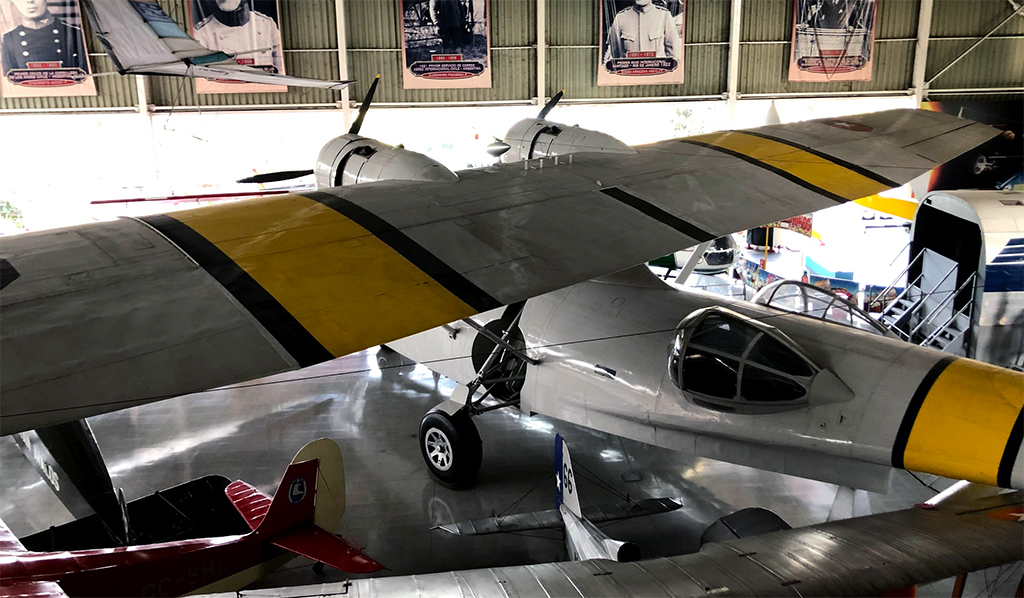
Operating with SLPAC
The Centre d’Expérimentations du Pacifique -CEP- was created to carry on the French atomic programme after it had been relocated in the Polynesia following the independence of Algeria, where the first atomic test range of France was located. Thus, the Aéronavale was tasked with ensuring the liaison on those vast oceanic territories, creating the Section de Liaison du Pacifique -SLPAC- on October 1 1964 at BAN Dugny-Le Bourget, with three Catalina’s acquired by the Union des Transports Aériens -UTA- on behalf of the Direction des Centres d’Expérimentation Nucléaires -DIRCEN. UTA was also in charge of the Centre Industriel de Papeete -CIP, which was the entity that modified the aircraft up to SLPAC standards.
In fact, CV-520 belongs to the second generation of Catalina’s flown by SLPAC between 1966 and 1971. After losing two aircraft in 1965, SLPAC decided to acquire two amphibians as a replacement; these ‘new’ ones were also acquired by UTA on DIRCEN’s behalf in Canada, and CV-520 in particular was assigned the civilian registration F-WMKR (allocated in February 1966), entering service with SLPAC in early 1966. The French Navy, serialled CV-520 as Aéronavale 20 with the call sign F-YEIA.
The official acceptance date of Aéronavale 20 by French authorities was March 9 1966, participating in various liaison duties assigned by CEP, specially linking meteorology stations placed on atolls in the zone of Polynesia.
Nevertheless, on March 1971 the dissolution of SLPAC was ordered, stating that all flight operations should cease by December 1, with the definitive dissolution date of the Service on December 31 of that year. The last flight of Aéronavale 20 took place on November 28 1971, and on December 2, CIP left the decision of its fate pending. From SLPAC’s dissolution date, the three surviving aircraft were placed in open storage at Faaa airport in Tahiti.
In Chile
A second lease of life came in 1973, when the well-known Catalina pilot Roberto Parragué wanted to buy one of the stored aircraft for his airline. However, because of the achievement for having linked Santiago and Tahiti via Easter Island in 1965, he obtained the three amphibians as a gift from the CEP and Aéronavale. Regarding the situation of ‘20’, a letter (No. 24/zm/log/air) was issued by Vice Admiral Clavérie – chief of CEP – on 25/06/1973, ratified by Chief of Property and Real Estate of Papeete, Tahiti, on June 27, 1973.
The three Catalinas were sent to Chile on board the ship ‘Andino’, arriving in Valparaíso during August 1973 and these were then offloaded and towed by sea to Quintero AFB, where they were refurbished and checked before flying to Los Cerrillos Airport, in Santiago. The former Aéronavale No. 20 was registered in the country’s Registro Nacional de Aeronaves (the Chilean National Aviation Register) as CC-CDU by the Empresa de Aeronavegación Parragué e Hijos Ltda., on October 1, 1974. On August 5, 1976, the owner canceled this registration because the aircraft was going to be used as a spares source. It was restored to the register on July 9 1979 (after a request dated June 6, 1979) being registered as CC-CGY by A.S.Par. Ltda., this was as a result of several banking problems and the necessity of using the “active” plane as a financial backup in order to get bank credit.
Its definitive cancellation from the register was dated September 9, 1993. It was donated and then moved to the Museo Aeronáutico’s facilities during April 1995 with the intention of representing the Manu-tara, but the plane spent at least 10 years in open storage before a definitive decision on its future was made.
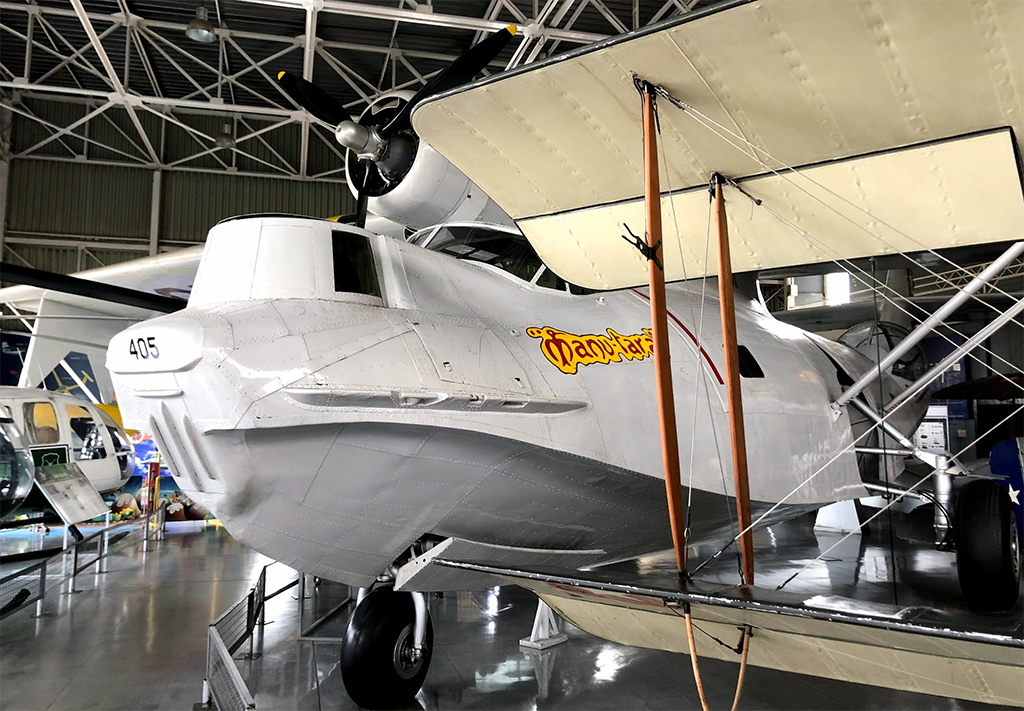
Rebuilding a Cat
This Catalina was in a poor overall condition, as it was the plane in worst condition of the three received in 1973 due to advanced corrosion, being presented to the Museo in April 1995. But some more damage was accumulated over the years, not only due to its ignominious situation of spares source, but also because of the damage made by the weather and the people that contributed to destroy it. CV-520 was never painted in ASPAR’s fleet colours and it did not wear the Chilean registration; its only flight in Chile was the ferry between Quintero and Los Cerrillos in November 1974. For the same reason, it was not transformed into fire-fighter configuration, spending its ‘life’ in the open at Los Cerrillos.
Several pieces of its airframe were used on the rebuilding process of the Catalina CC-CCS, after it sank at the Gutiérrez lake in Argentina on January 27, 1986, mainly the lower part of the nose and parts of the hull and wing. The rebuilt PBY is currently flying in Australia as it was acquired by HARS and registered VH-PBZ.
The main task of the Museo Aeronáutico was to locate spare parts to complete the airframe restoration to the 1951 Manu-tara’s standard. The main problem was trying to obtain the waist blisters, and to fit them on the area where these were originally located, because CC-CGY had them replaced by an access hatch on port side and windows on the starboard side. Many skin panels had to be removed and replaced due to corrosion. The nose and hull area just forward of the cockpit had to be rebuilt, using the Ibero Chilena de Aviación’s (IBCH) Catalina CC-CDT as a reference. After fourteen months of work, starting on October 1, 2004, and finishing on December 12, 2005, the amphibian finally received the original colors of the Chilean Air Force Manu-tara, FACh 405.
What about the real Manu-tara?
Manu-tara or Bird of Luck in the Rapa Nui language (also a tern found on that island), was the first of 230 Catalinas built for the USAAF (designated as OA-10A-VIs) by the Canadian Vickers Ltd. of Cartierville, Montreal, between December 1943 and May 1945. Its USAAF s/n was 44-33868 (it’s c/n being CV-304), later serving with the Fuerza Aérea de Chile -FACh- (Chilean Air Force) from the end of 1947, being assigned the serial FACh-405. Interestingly, the Catalina restored by the Museo Aeronáutico belongs to this batch built in Canada.
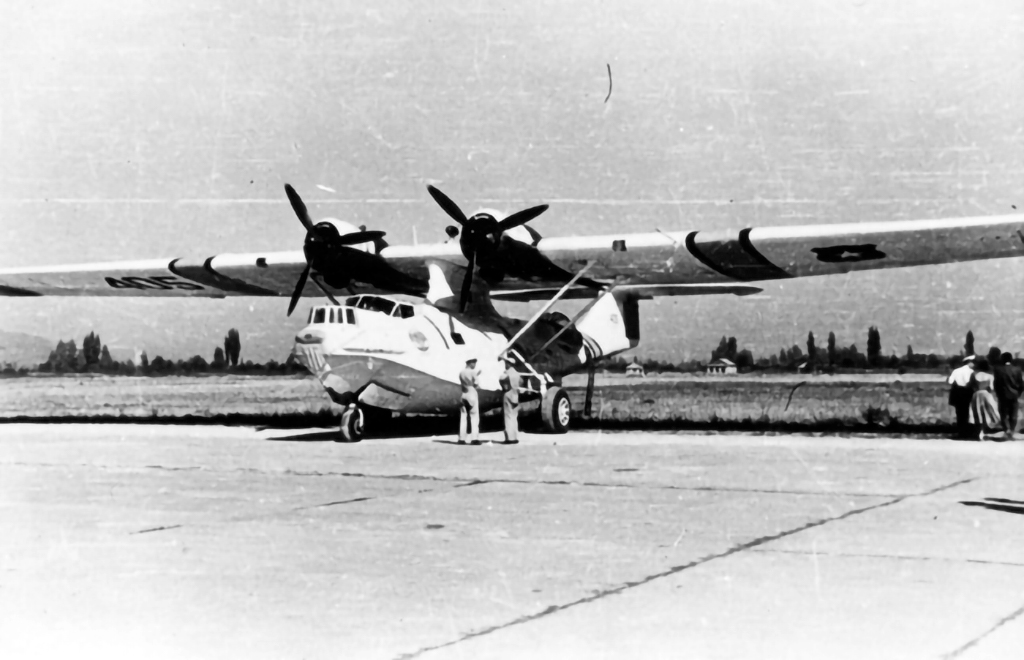
FACh 405 entered into Chile’s aviation history on January 19, 1951, when –the then- Captain Roberto Parragué Singer, linked the Chilean city of La Serena with the Easter Island on an epic flight that lasted 19 hours and 22 minutes, covering 2,047 miles. Before that, and as a preparation, the crew assigned to the flight took part in a long-endurance flight from December 27 to 28, 1950, spending 19 hours 30 minutes in flight, taking off from Los Cerrillos in Santiago, overflying Valparaíso, Antofagasta, Sala y Gómez Island, Juan Fernández archipelago, Talcahuano, Los Vilos, and finally landing at Quintero.
Manu-tara arrived safely in Easter Island’s Mataveri landing strip on January 20, but several events conspired against the successful return of the aircraft and its crew back to Chile’s mainland. Because of poor weather, the Cat got stuck in the muddy landing strip, thus it was determined that the take-off had to be made from the sea. Unfortunately, on January 28 during the take-off run, the Cat’s starboard wing tip struck the water damaging the float; hence, the aircraft was taken back to terra firma, while its crew set out to wait for a decision about its repair on the Island.
Although the damage was not as big as expected (around 5% of the aircraft), the amount of money involved in repairing it on the Easter Island , it was decided to struck her off charge from the Grupo 8 on April 10, 1951, and it was ordered to bring back to the mainland all useful parts for possible use as spares by the remaining FACh Catalina fleet. In the meantime, the first flight between Easter Island and South America, was made by Capt. Gordon Taylor and his crew, on board the Boeing PB2B-2 Catalina Frigate Bird II, arriving in Chile in March 1951.
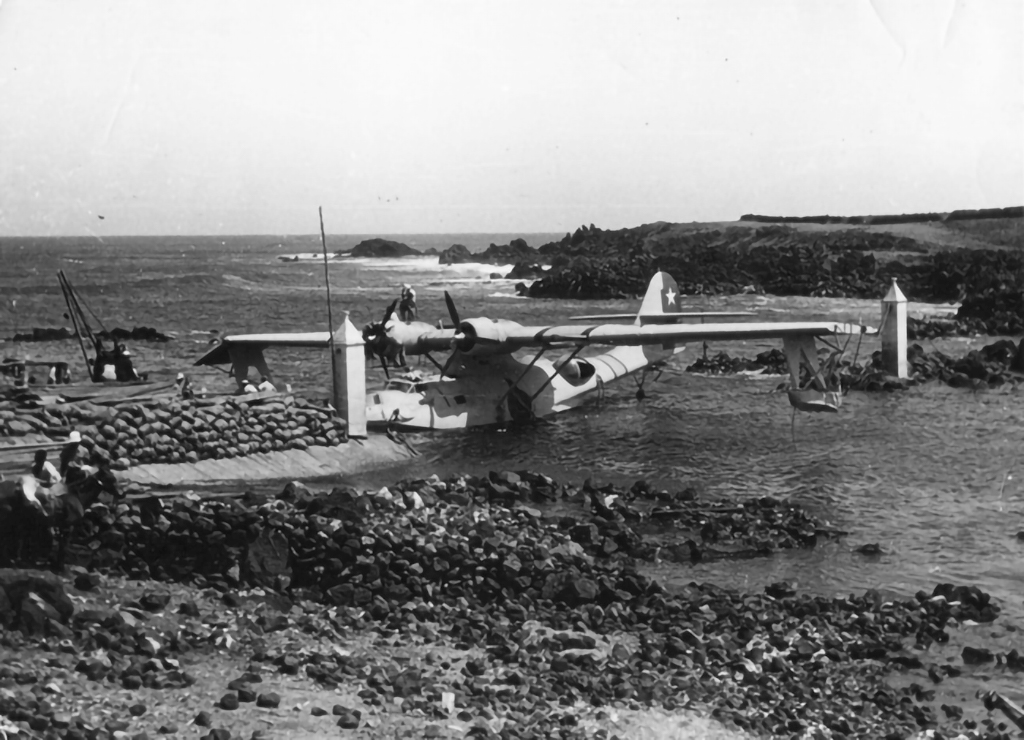
Later, Parragué and a FACh team visited the Island by sea, carrying the necessary spares and a new starboard wing for the crippled Cat. The work was finished after various months and it was requested to return back to the continent flying her, still as FACh 405, but this was denied by FACh authorities. Instead, it was decided that Manu-tara had to be loaded on board the Chilean Navy’s ship ‘Pinto’, but before that, The Cat managed to take off from Mataveri airfield and land by the side of the ship, just to be loaded on the deck, departing to Quintero in late April 1952.
In the early days of the following month, Manu-tara arrived in Quintero with just half of the mission accomplished, but again it was able to perform a short flight after being off-loaded. At the Air Base it spent some months undergoing a complete check, being reinstate to FACh service through a decree dated July 26, 1952.
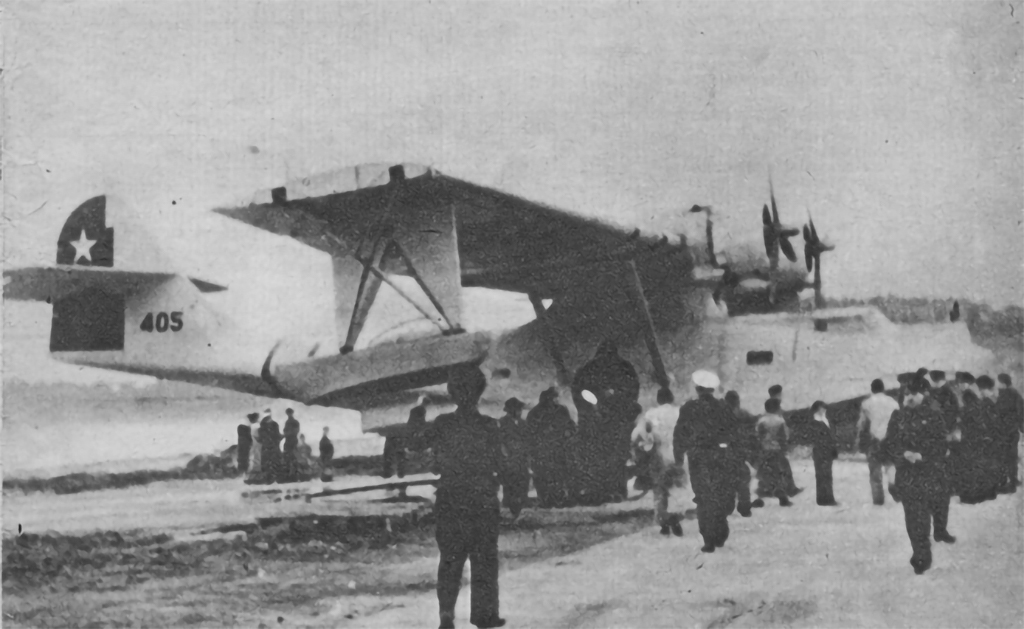
In January 1957, all aircraft in FACh service were reserialled, thus the famous Catalina FACh 405 was reserialed as FACh 560. Under this new registration, Comandante Parragué performed a second flight to Easter Island in January 29, 1959, his task was to complete the round trip with the same aircraft as the previously unfinished leg was still on his mind, but with a ‘slight’ difference: He was not authorized to perform the flight, as it was a regular flight to Juan Fernández archipelago. Although this flight was successfully accomplished, Parragué had to leave the FACh because of his behavior, but on the other hand he got the people’s recognition for his and his crew milestone.
The following year, Roberto Parragué acquired his first PBY-6A and he used it for transporting both passengers and cargo, before transforming his aircraft into water-bomber configuration in the seventies. In 1965, under a contract issued by LAN-Chile he flew his PBY-6A CC-CNP Manu-tara II (ex US Navy 46665, c/n 2029) from Santiago to Tahiti and back, with the aim of investigating the Pacific Ocean route to Australia; this flight brought him recognition from France in 1973.
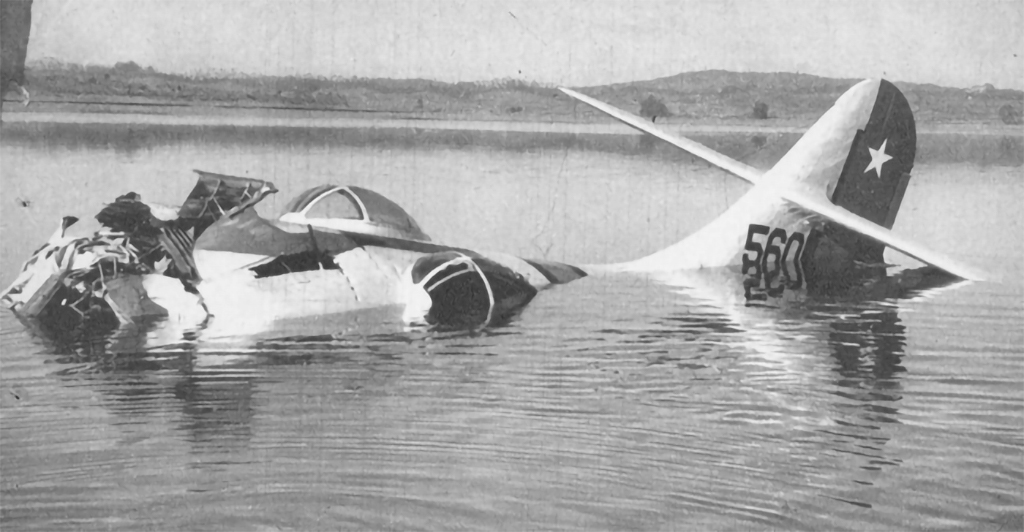
The respected Chilean pilot, Roberto Parragué Singer, passed away on December 25, 1995 at the age of 82. Regarding the fate of the original Manu-tara, it broke its wings on June 15, 1961 when it crashed in Peñuelas lake during a crew training flight, resulting in the death of all the crew. It was finally retired from FACh Grupo 8 service on July 21, 1961. None of the Catalinas operated by FACh were preserved. Luckily, the Museo Aeronáutico is able to exhibit an example of this worldwide recognized aircraft, representing the Military and Civilian planes that used to operate in Chile in a variety of missions, for many decades.
In relation to the historic PBY-6A Manu-tara II, civilian registration CC-CNP, it was stored at Seia, Portugal, since 2000, after operating in Spain between 1988 and 1996, where it was briefly registered EC-FXN, and in Portugal between 1997 and 2000 on firefighting duties; in July 2007 it was acquired by an Australia-based restoration organization, where it will continue flying for pleasure of Australian aviation fans.
Acknowledgements
Many thanks to the following people, who provided assistance in the making of this investigation: (In Alphabetical order) Jacques Chillon, John Davis, Jean Pierre Dubois, Daniel Hagedorn, Pétur P. Johnson, Terry Judge, David Legg, Germán Lüer, Cristián Marambio, William Olave, Gonzalo Parragué, Horacio Parragué, Ricardo Prambs, Ragnar Ragnarsson, Juan Pablo Rubilar, José Ramón Valero, and the personnel of Museo Nacional Aeronáutico y del Espacio de Chile.

